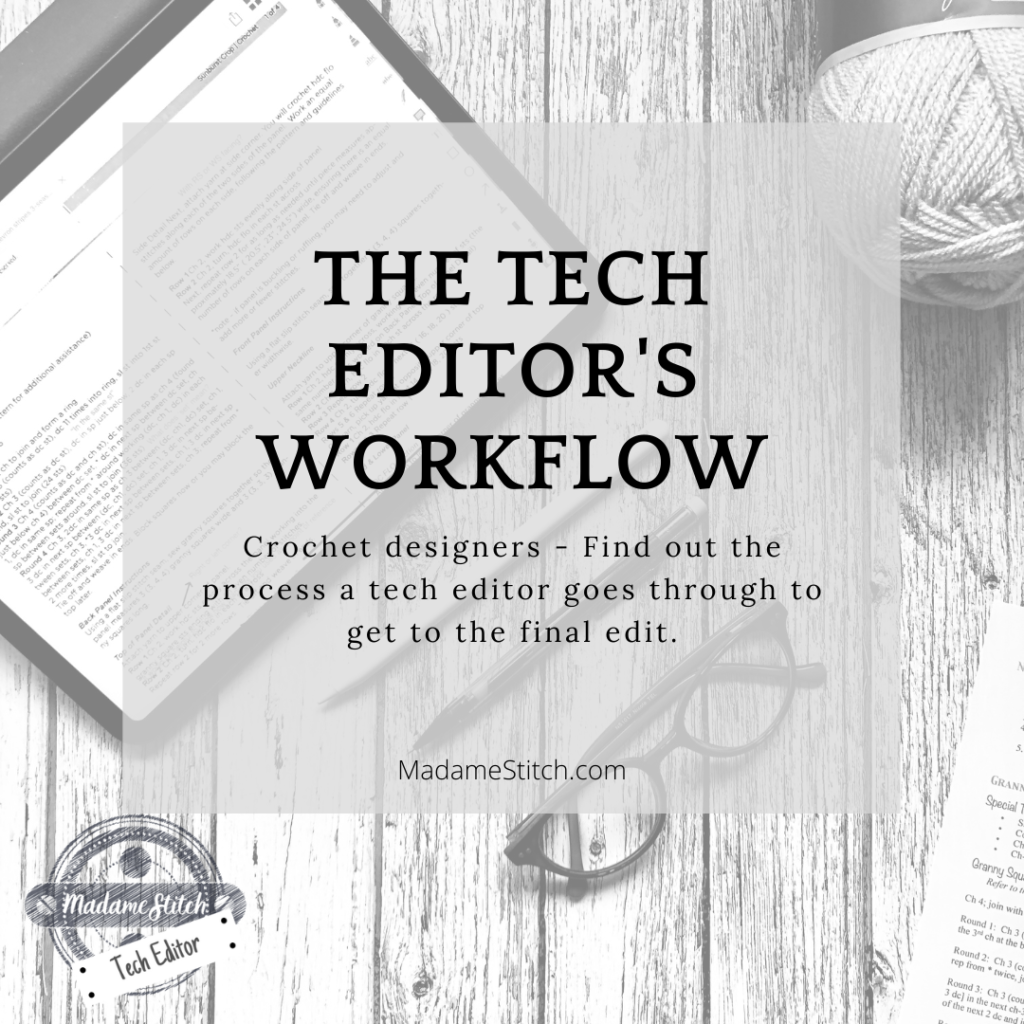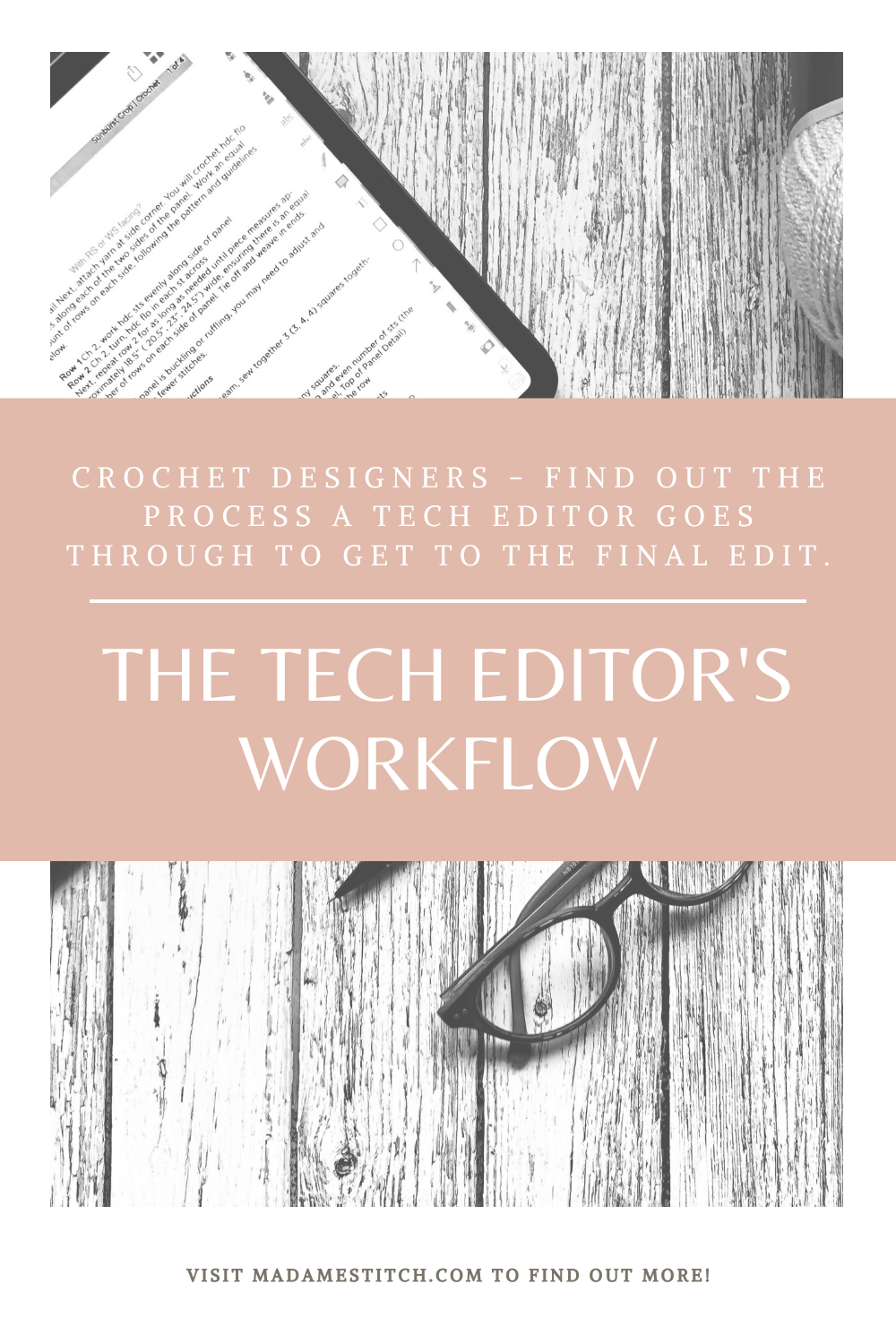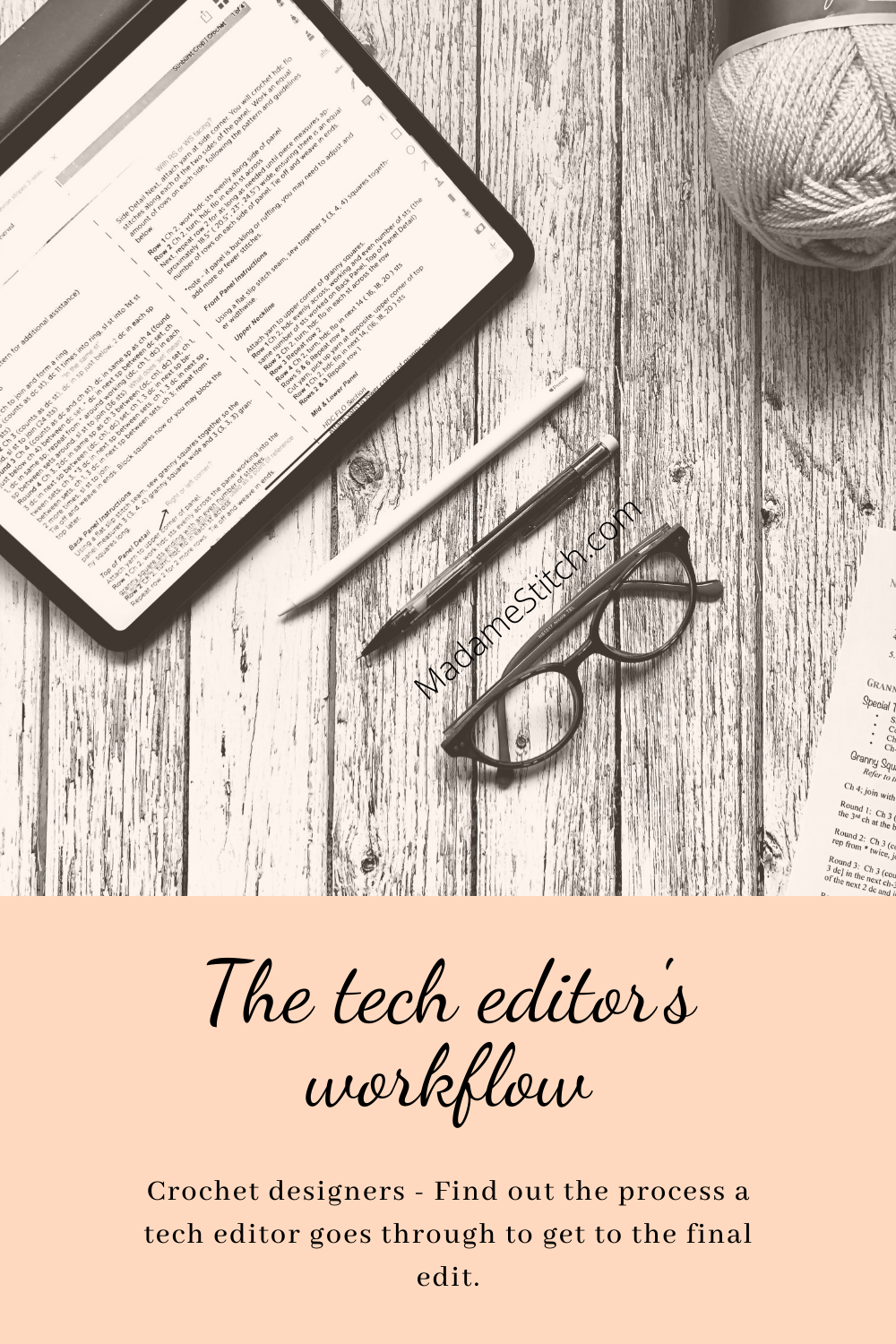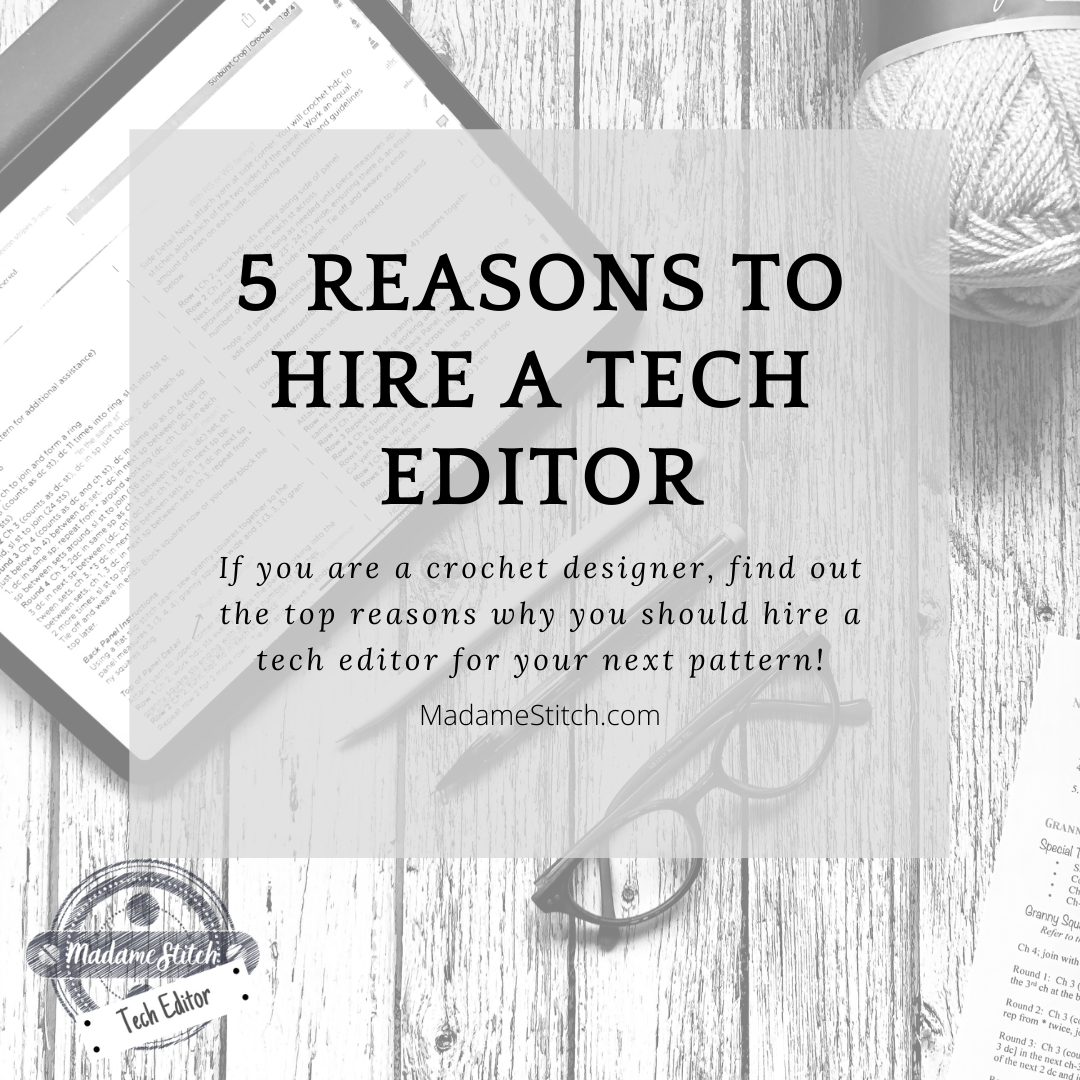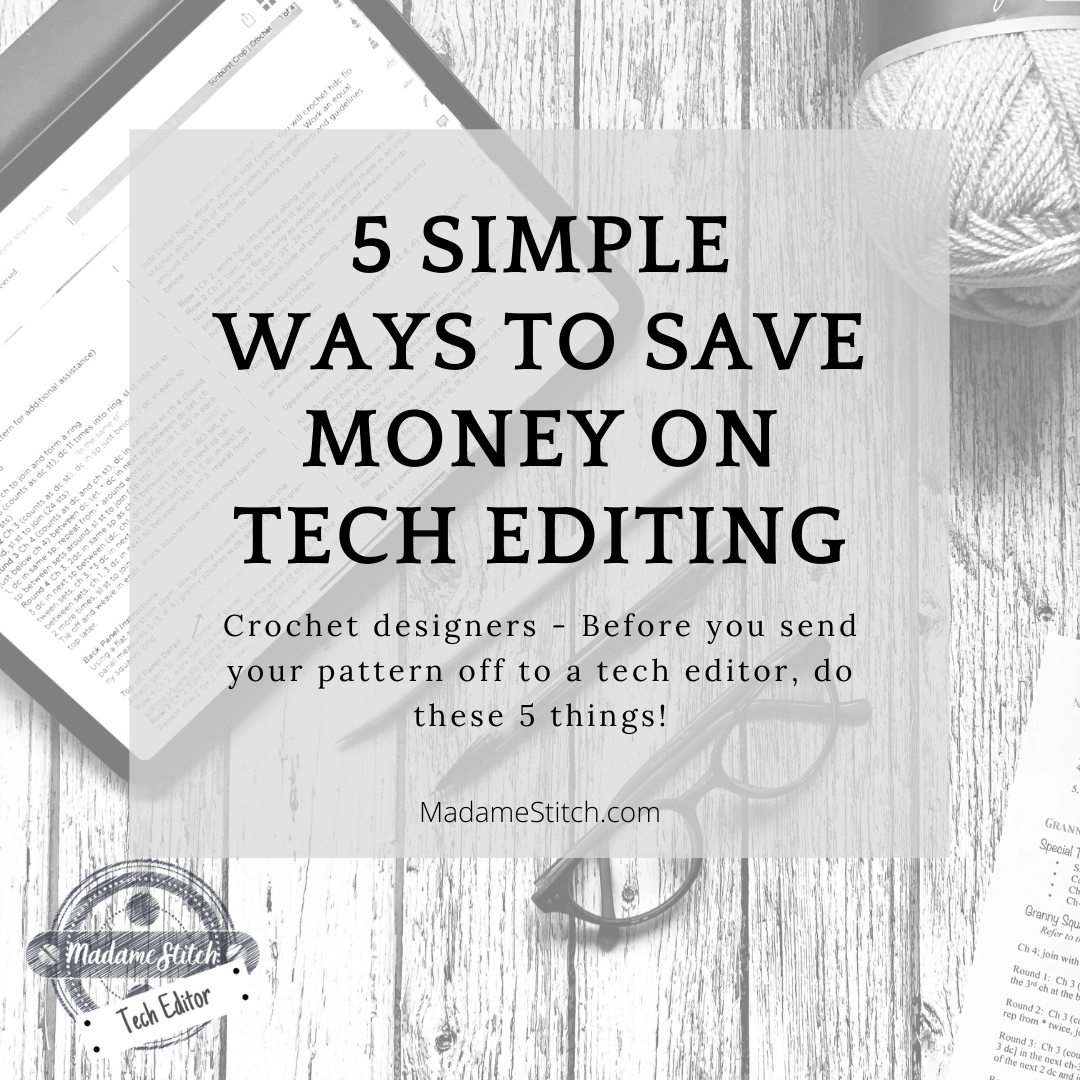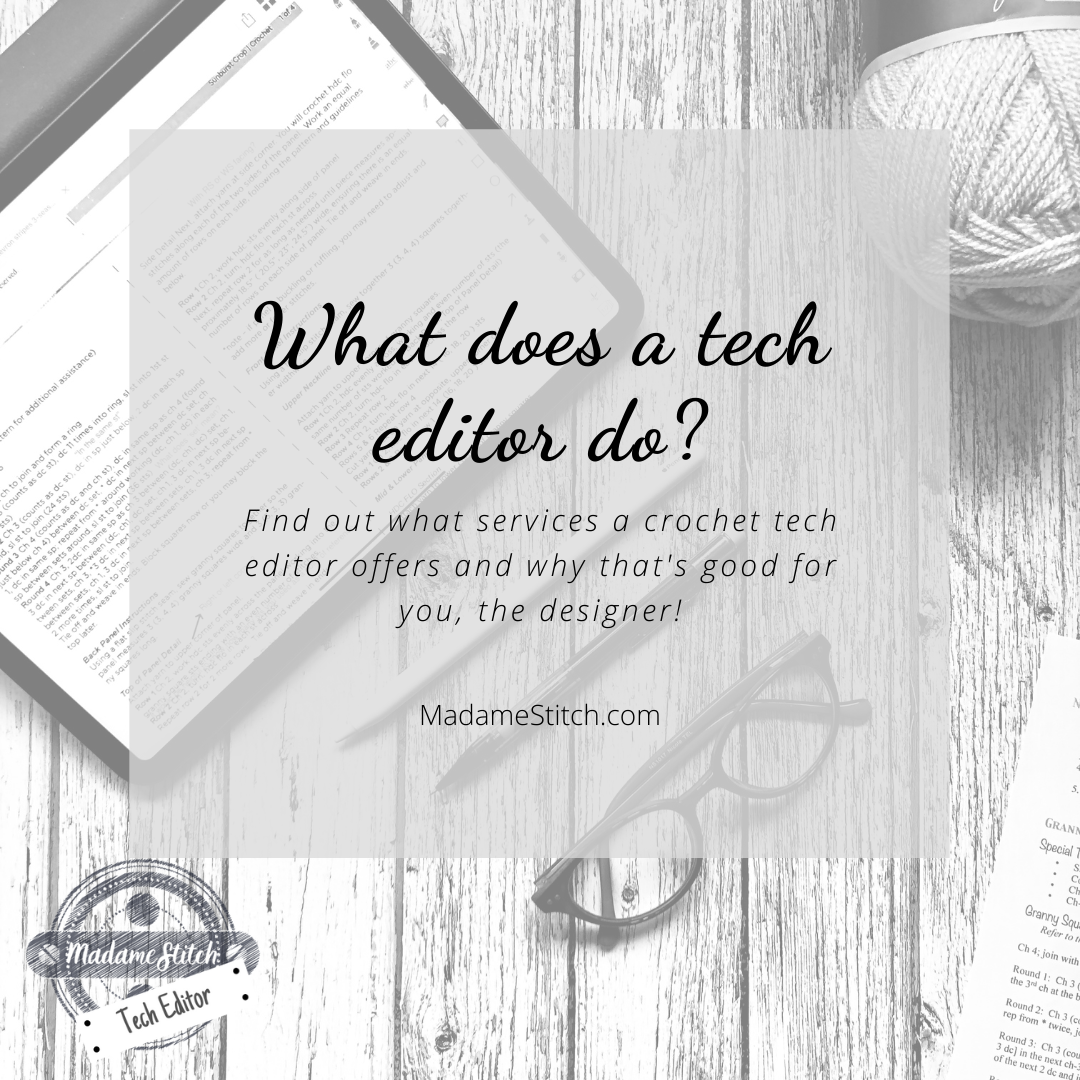The 411 of the basic tech editor workflow
“I want to hire a crochet tech editor but I have no idea where to start or what to expect,” you say.
If you’ve never used a tech editor before, it’s difficult to really know what to expect. Once you’ve found someone, what do you do next? While each tech editor will probably have a unique process, the basic structure of the workflow will be the same.
To give you some idea of how this all works, I’ll give you a glimpse into my tech editing process, aka workflow.
I receive a request from a client.
Most clients contact me by email. New clients can find a contact form on my website specifically for tech editing inquiries. You can use this one ☟ to make your request!
If I have availability, I take a cursory look at the pattern. After a quick assessment, coupled with what the client has indicated he/she wants done, I estimate how much time I’ll need to complete the edit.
Here are some estimates about how long an edit might take:
- Simple accessories like scarves, cowls and hats: One hour or less.
- Complex accessories like socks, mittens and shawls: 1-2 hours.
- Simple garments: 2-3 hours.
- Complex garments: 3+ hours.
- If the pattern includes charts and schematics, the time for editing depends upon the complexity of the item.
If I’ve agreed to take the job, the client and I will agree on a time and cost estimate, plus a deadline for the final edit to be delivered.
First pattern read through…
The first time I read through a pattern, I get a sense of the pattern as a whole and catch any glaring errors. These usually involve issues of formatting or punctuation.
A tech editor reads the instructions slowly and carefully.
At this point I may catch more formatting and punctuation errors. But this time is devoted to seeing whether or not the instructions are clear and concise. Is there a better (or shorter) way to say something? Do the pictures match what the client has written? Is the client consistent with the instructions throughout? These are some of the questions I address this time around.
A tech editor checks all of the math.
If there is math to check, such as sizing and stitch counts, this is the point at which I begin to tackle it. Stitch counts should match the instructions – in other words, accuracy at the points of decreases and increases. Are the stitch counts correct from step to step? In garment construction, I usually create a spreadsheet that does a lot of the checking for me. I set up formulas that compare the sizing against gauge and other factors. No one sees that spreadsheet; it’s simply one of the tools I use for editing.
Second read-through…
At this point, I go back and slowly, very carefully, read through the pattern again to catch any errors I might have missed the first time. I usually read through a pattern multiple times, putting it down between readings to ensure that I am always looking at it with fresh eyes.
First edit returned to client
Once I’m satisfied that I have caught everything, I send the annotated pdf back to the client, along with an explanation of what I found. I also point out items of special note. I want to be sure the client understands my choices and has an opportunity to challenge me on anything I’ve noted.
A tech editor’s next steps
This is when I may do subsequent edits depending upon what the client and I find. The client is encouraged to make her own decisions about changes that I suggested. Of course, there are some errors, like the math and missing or erroneous instructions, that are non-negotiable. However, sometimes I make suggestions that I feel will improve the pattern but aren’t needed for the accuracy.
At this point, the client implements the necessary changes, then sends the edited pattern back to me for another check. Typically this back and forth happens once but, if a pattern is more complicated or the designer is fairly new to pattern writing, we might make several rounds of revisions before settling on the final edit.
Time for the invoice!
Once both of us are satisfied that the final edit is complete, I send an invoice for payment. I want to be sure the client is completely satisfied with my work and with the changes that have been made. Remember, the client always has the final say!
That’s it!
The process can sound long and scary but it really isn’t. I want my clients’ patterns to be the very best they can possibly be and that takes time and diligence. Your pattern AND your reputation are worth it!
In case you missed it…
Here’s a free downloadable checklist to help you save money on your next tech editing job.
In the next installment…
You’ll find out what you should expect from your relationship with your tech editor.

